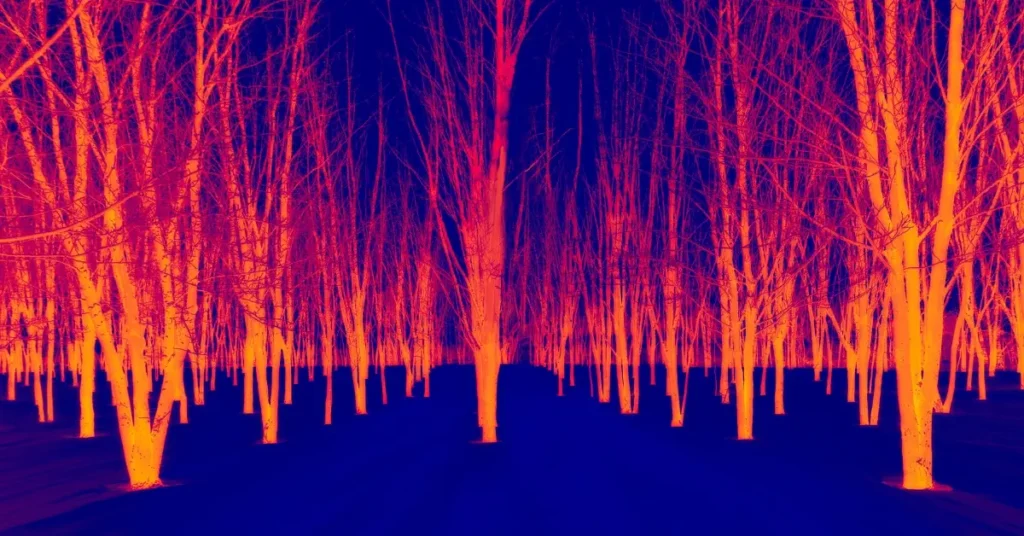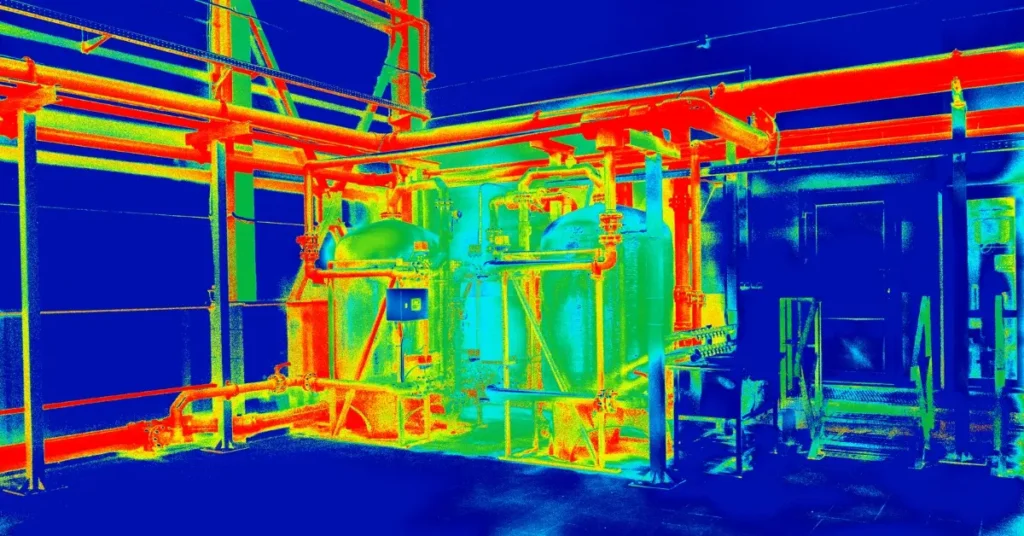Need to see what the naked eye can’t? Leaks, heat, hidden animals? An infrared drone can find them. These drones use unique cameras; they see heat, not just light. In this article, we will cover their uses and explore how they solve real problems.

What are Infrared Drones?
IR drones are unmanned aerial vehicles or UAVs with a thermal camera and sensors that can detect infrared radiation.
Particular objects, animals, and humans emit this infrared radiation.
The drone’s sensors also gather real-time data. Helpful for situations where time is a consideration such as search-and-rescue operations, tracking wild animals, and inspecting buildings.
How Do These Drones Work?
Certain objects can emit different kinds of radiation but IR drones see based on temperature and these readings can be seen by a drone’s thermal sensor.
Drones with infrared cameras will gather data from the collected thermal readings and it will be translated into images.
Here’s how the process works:
1. Infrared Sensor
Those objects that generate heat, also generate infrared radiation. The infrared sensor detects this radiation and converts it to data that can be used to calculate temperature differences. It is useful to find heat sources in the dark, through smoke or in bad visibility.
2. Image Processing
The drone’s software takes the thermal data and converts it into a visual image after the drone collects data. It allows operators to know when temperature changes indicate there are objects, such as people, animals or mechanical problems.
3. Color Mapping
The system assigns colors to make thermal images easier to read by temperature level. Warmer areas, such as reds, oranges and yellows, appear while cooler areas, such as shades of blue or purple, do not. This creates a contrast in which heat sources, leaks or structural weaknesses are easy to analyze.
4. Data Analysis
In addition to being visuals, the images captured by the infrared sensors contain very useful information for a large number of applications. They can help law enforcement find suspects, wildlife researchers pinpoint animals in the dense forest, and engineers identify overheated machinery or pipeline leaks. Infrared technology is an important tool to analyze heat patterns in multiple industries.
What are the Features of an Infrared Drone?
IR drones are made differently depending on situations it’s going to be used for. Some IR drones can have AI capabilities while others have sharper images from their camera.
Here are some key features that you should consider when deciding to get a new IR drone:
1. Quality Camera
A good quality camera comes with a smoother frame rate and resolution that can be helpful for your detection of objects in the distance.
2. Long Battery Life
The saying goes that ‘time is gold’ and relates well to search-and-rescue work, or when you’re trying to locate wildlife animals. The longer that a drone’s battery lasts, the more time you’ll have to investigate, identify, and rescue.
3. Autonomous Flight Models
Obstacles or weather can hinder smooth drone operations. But good autonomous flight software lets you seamlessly handle the drone with care even in the harshest conditions.
Applications of These Drones
Many industries use IR drones for different environments and scenarios. Here are some of their uses:
1. Search and Rescue Operations
This is a critical function of emergency services to help animals and people in need, particularly in conditions of limited visibility and low-light incidents like fog or rain. Even with these conditions or dense environments, an IR drone, with its heat detection, can assist them in finding body heat.
2. Firefighting
Firefighters put their lives on the line looking for trapped people during a fire. But infrared drones can help them in locating hidden blazes, monitoring hot spots, and finding people when smoke obscures their line of sight.
3. Law Enforcement
Thermal imagers help officers in emergency situations and events where visual sight is compromised, impaired or ineffective.
4. Building Inspections
There is no way to avoid heat loss and electrical issues in buildings. IR drones identify these issues and an effective remedy is formed through property management.
5. Agriculture
Crops are common pests, but they can be prevented. IR drones can monitor the crop’s health and be used to see the pest’s activity. It may also serve the purpose of detecting stresses in the farms and fields.
6. Wildlife Monitoring
Problems in wildlife can occur such as poaching but IR drones can help prevent it and monitor nocturnal species without disturbance.
7. Industrial Maintenance
Components can fail in factories and power plants, but drones with infrared cameras can be used to inspect them before they happen.

Advantages of Infrared Drones
IR drones, like the ZenaDrone 1000, have benefits that can be greater than traditional drones. These benefits include:
1. Enhanced Visibility
IR drones have the ability to see through situations when vision is limited like smoke, fog, or darkness that regular cameras can’t.
2. Increased Safety
IR drones can inspect a building on fire, detect problems in the wildlife and lessen human exposure to harsh environments.
3. Efficiency and Cost Savings
An IR drone can avoid extra labor costs and scan and cover a large area in a short amount of time.
Challenges of These Drones
IR drones have their benefits and advantages especially in emergencies or maintenance. But they have some challenges as well. These includes:
1. High Cost
An IR drone with its additional sensors can be more pricey than traditional drones. These may be the high-quality thermal sensors that drive up the price and maintenance costs may also add up.
2. Legal Restrictions
Some areas might have laws governing drone use that are different from those of others, especially for surveillance.
While using IR drones, take note of these restrictions to maintain compliance and avoid legal issues.
Choosing the Best Infrared Drone
When choosing the right IR drone, it should not only be the most expensive one you can find, but also match your needs perfectly.
Do you plan to use it for security, search and rescue, or to inspect some industrial structure?
Drones with infrared cameras are worth your attention as they offer sharp thermal imaging, long flight times, and a stable, dependable connection.
You might consider a few things, such as:
- Equipment must be durable and straightforward to operate—especially in tough situations.
- Features like AI tracking and real-time data processing can tip the balance in your favor.
The Future of IR Drones
Infrared drones are about to level up big time. It will handle security, search and rescue, and inspections seamlessly with its artificial intelligence and a longer battery life. It is also essential in high-risk situations knowing it can see in the dark or through smoke will be easier.
Many years from now, expect IR drones to get smarter with 5G and edge computing, and instantly process data instead of recording it. They will also be lighter, can fly longer, and adapt better to more complex environments.
As regulations also adapt, expect that these drones won’t become just tools but game changers for safety, surveillance, and disaster response.
The Takeaway
Industries get a glimpse of what the human eye can not see through the infrared drones. They track people down when emergencies occur, help identify equipment failures in order to make our work safer and more streamlined. It is powered with thermal imaging and smart features, which addresses issues that were previously difficult to address.
As technology advances, these drones will become smarter, lighter, and more capable. They will crunch data in real-time, fly further, and withstand harsh environments. The ideal drone with an infrared camera for one individual won’t necessarily be the same for another; it is less about your specifications and more about how much work it is for you.
